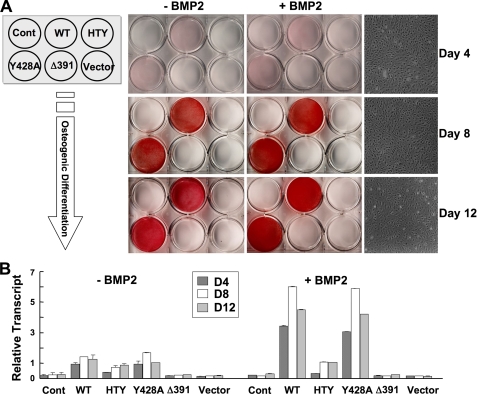FIGURE 6.
Loss of osteogenic differentiation and BMP signal integration by SMID mutant RUNX2. A, commitment of reconstituted Runx2 null cells to osteoblast lineages was tested for 12-day time period. Runx2 null cells cultured in 6-well dishes were infected with pre-determined m.o.i. of Runx2 (wild-type, Y428A, HTY, and Δ391) and control adenovirus. Schematic illustration of a 6-well culture dish on the left indicates different adenovirus and their respective wells. Cells with indicated treatments and days were fixed, and immunocytochemistry for early marker alkaline phosphatase was carried out as described under “Experimental Procedures.” Images of scanned ALP-stained plates are presented. ALP activity and BMP2 enhanced signal were seen only in WT- and Y428A-expressing cells. B, cells infected with indicated adenoviruses were cultured in the presence and absence of BMP2 (100 ng/ml) in osteogenic media and harvested at the indicated days for total RNA isolation. Relative expression levels of the ALP early marker gene for osteoblasts were monitored by real-time reverse transcription-PCR analysis.

